Refund Guaranteed
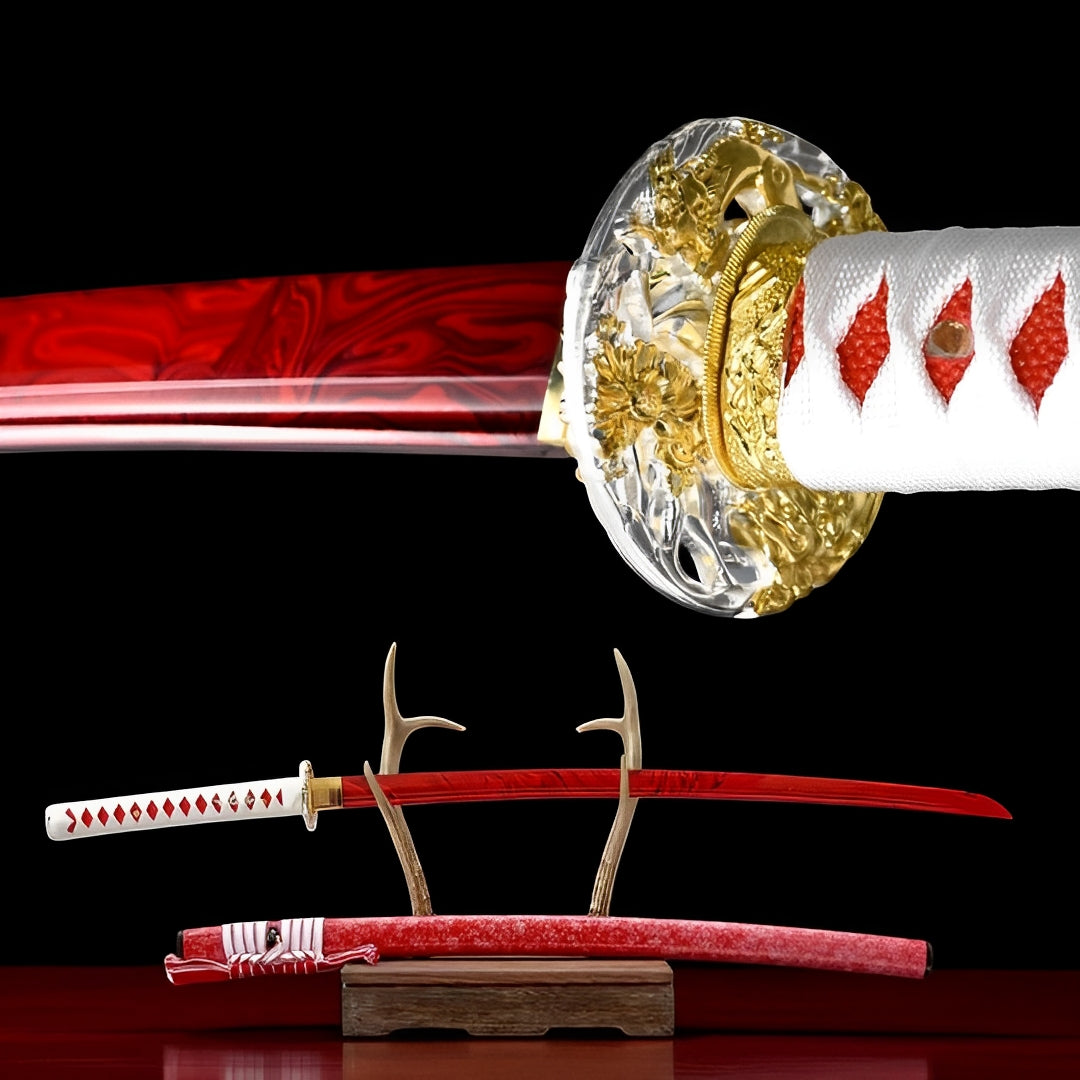
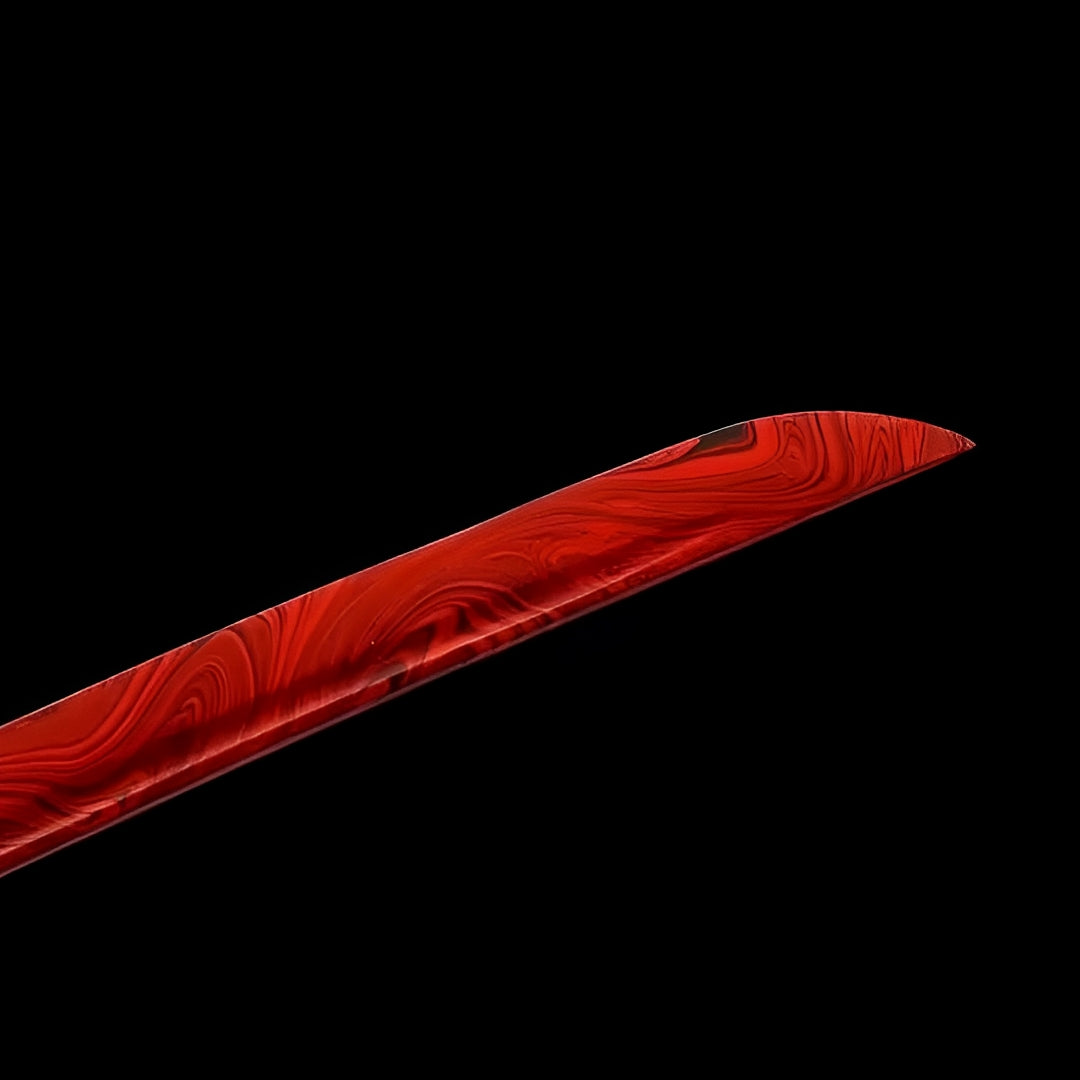
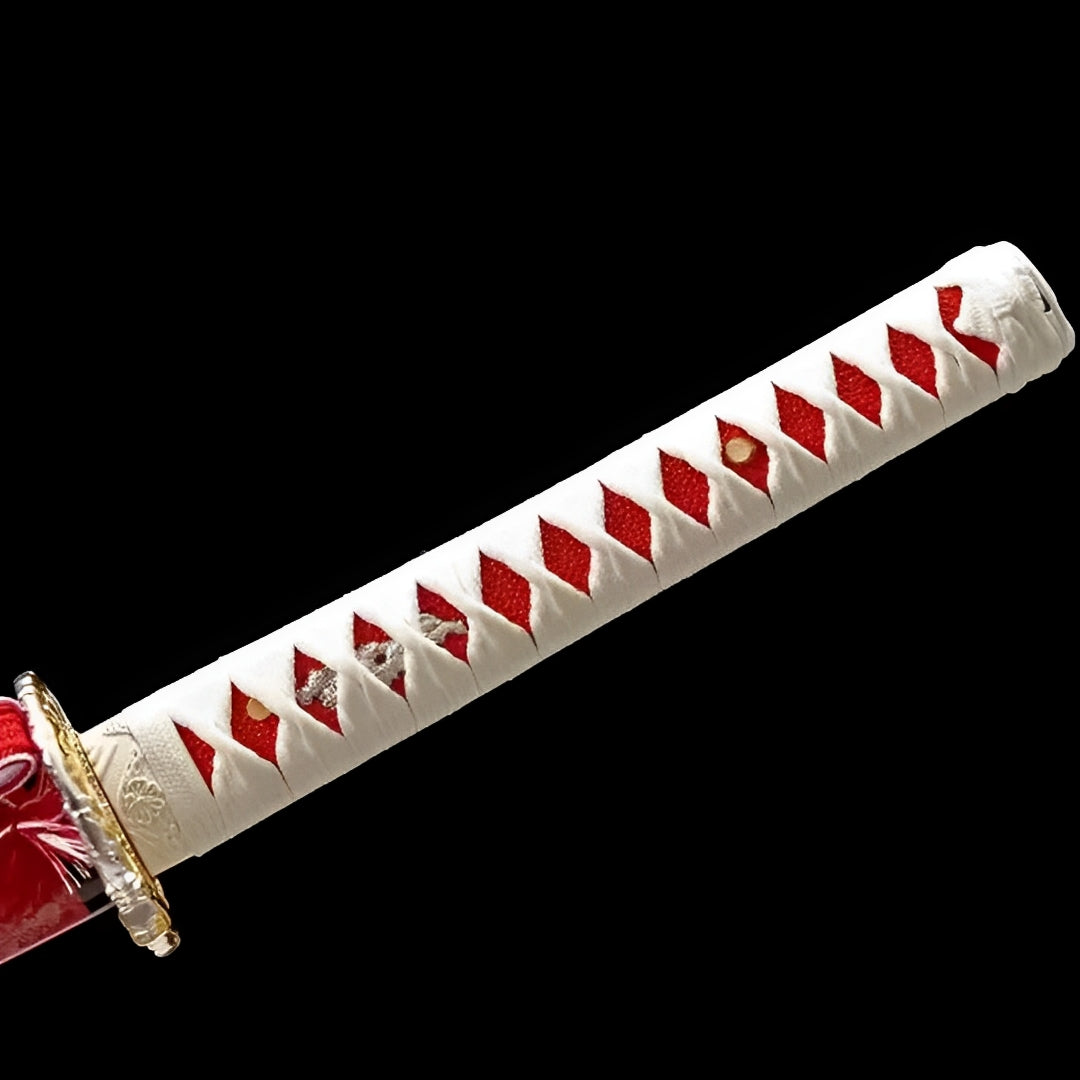
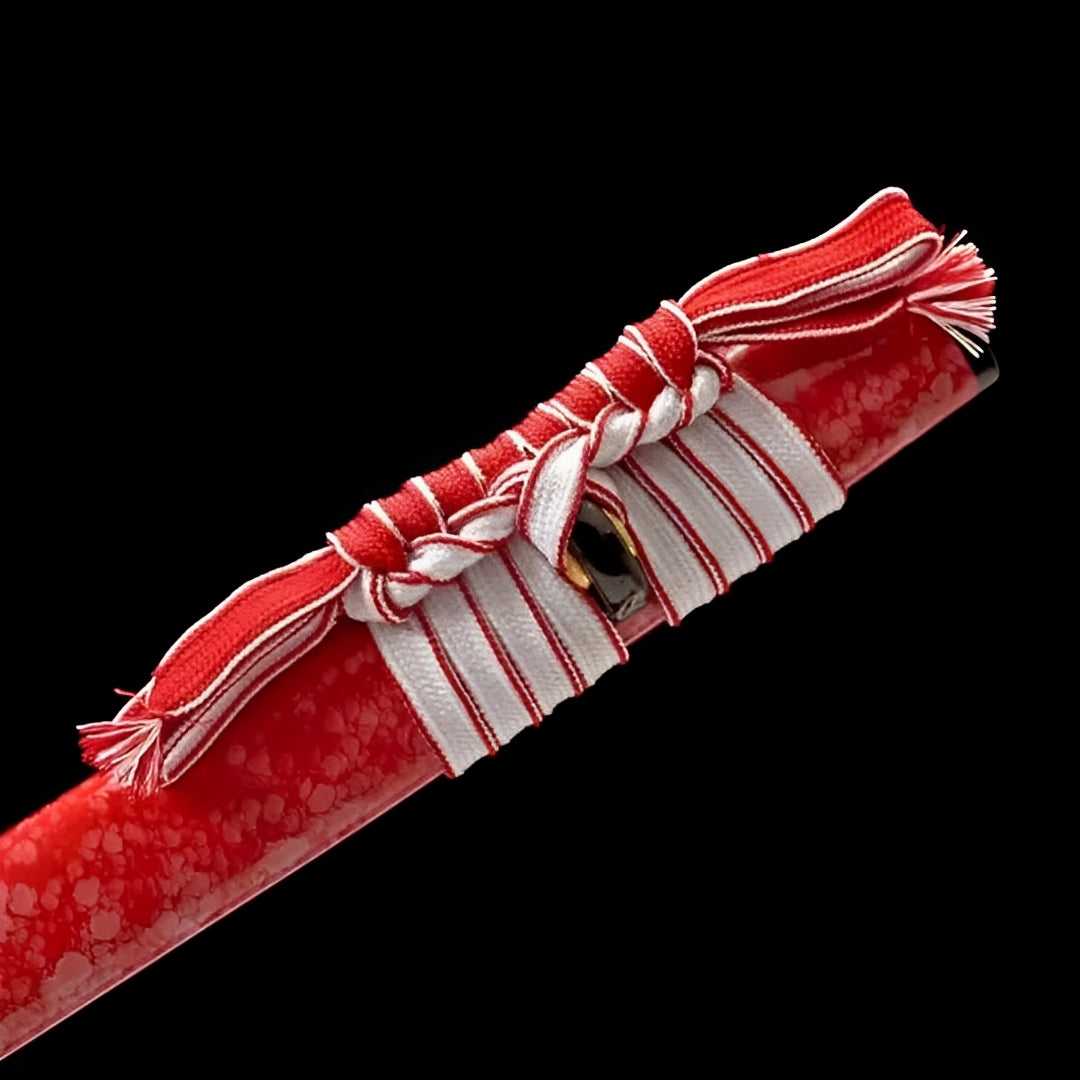
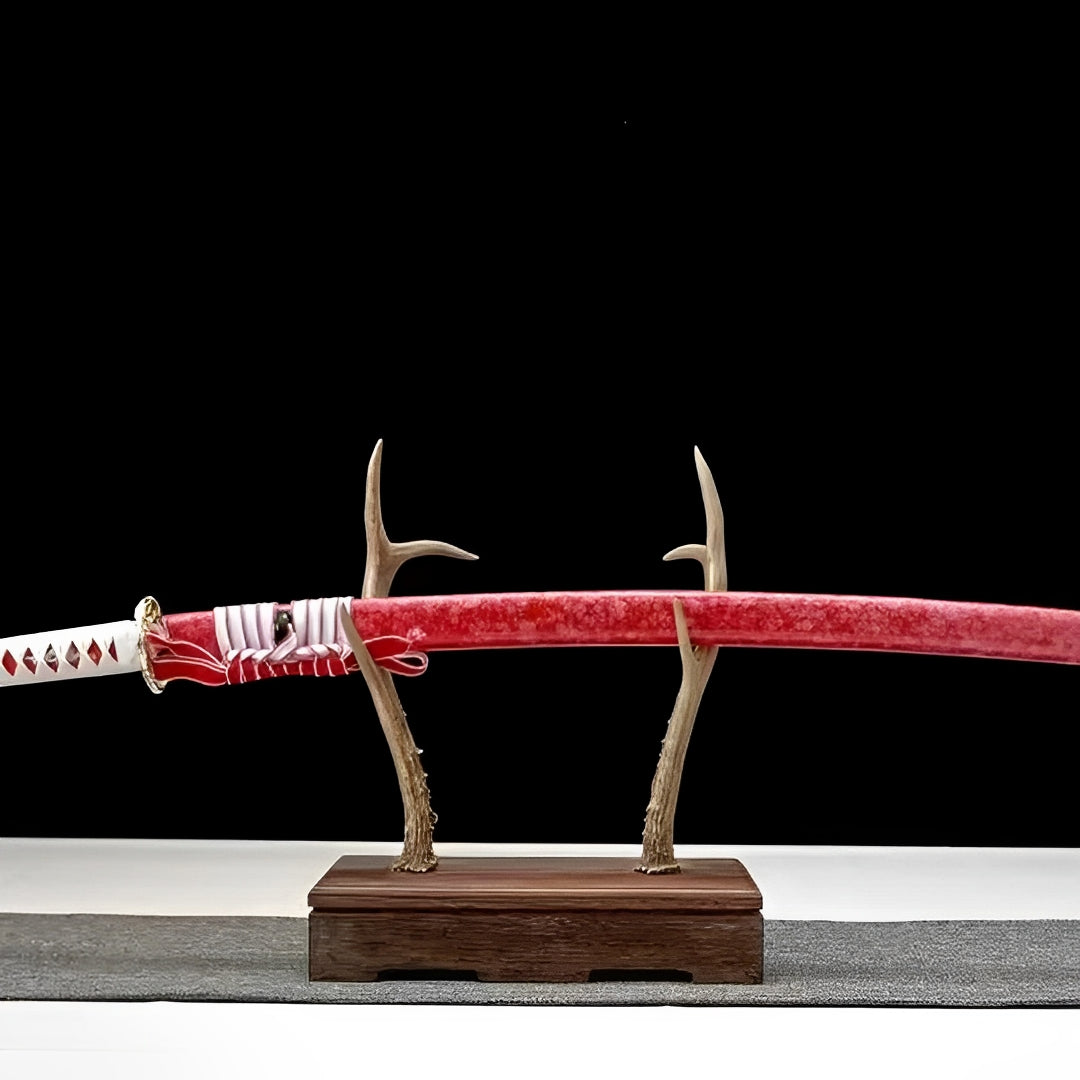
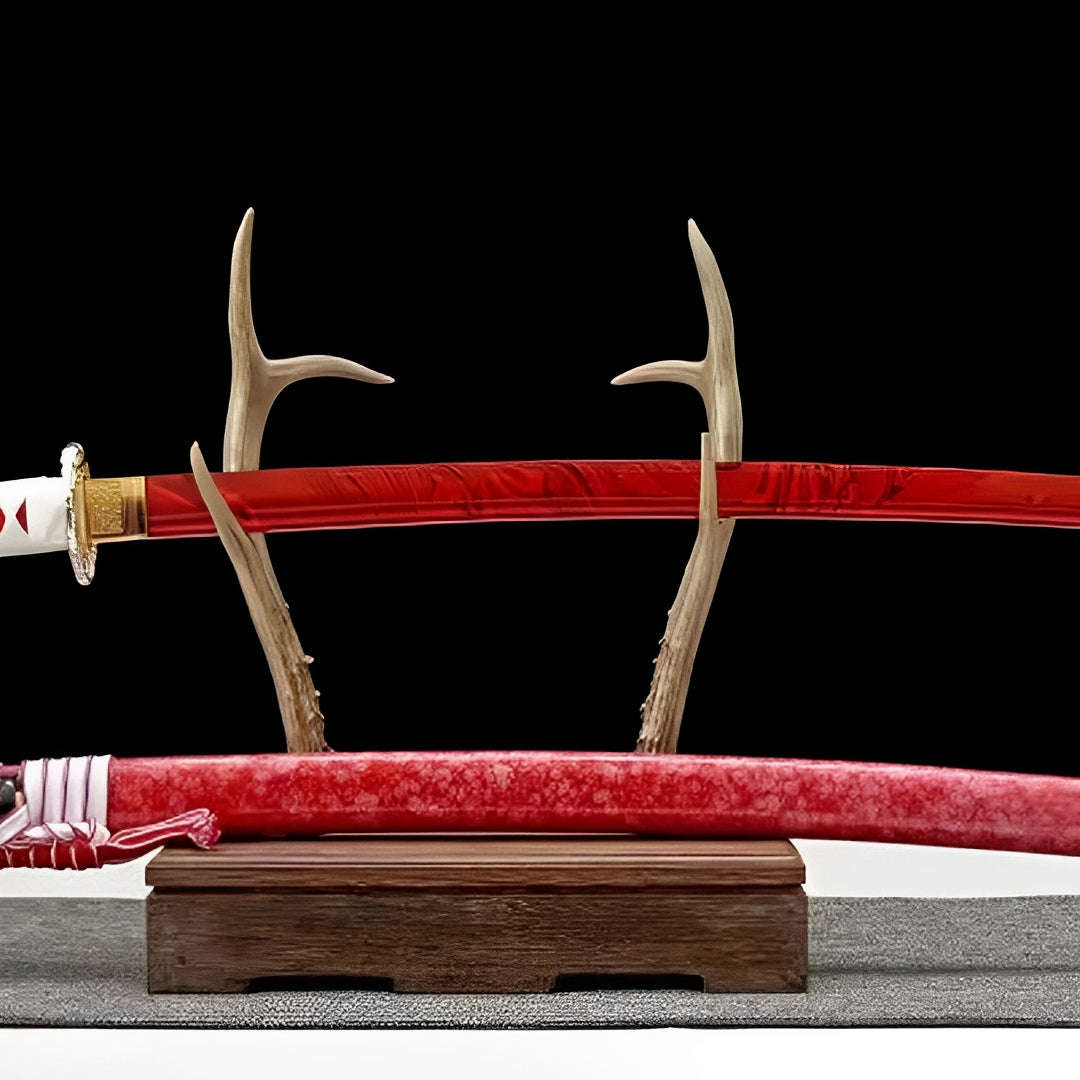

Why choose us
Ships within 48/72h
Forged Blade
Collector Quality
Trusted Globally
Inspired by Japan
Red Blade Katana - ブレード
Included with your order



Note: Engraving placement and orientation may vary by blade model (hamon, geometry, and flat area).
Free Shipping over $250
No Bots, No AI
Refund Guaranteed
Free Shipping over $250
No Bots, No AI
Our team is here to help with any questions or concerns.
We’re always happy to assist you — don’t hesitate to reach out.
Why choose us
Ships within 48/72h
Forged Blade
Collector Quality
Trusted Globally
Inspired by Japan

Red Blade Katana - ブレード
Specifications
- Handmade
- SHARP
- Blade: 1060 Carbon Steel
- SAGEO & ITO in Cotton
- Synthetic Rayskin
- Full Tang
- Iron Tsuba
- Total size: 105cm / 41 (in)
- Blade size: 72cm / 28 (in)
- Blade width: 3,2cm / 1.2 (in)
- Blade thickness: 0,7cm / 0.27 (in)
- Handle size: 30cm / 11.8 (in)
Red Blade Katana - Beautiful Violence Unapologetic Edge
Embrace what swords truly are with the Red Blade Katana, weapon refusing comfortable lies about "honor" disguising murder. This unflinching honesty sword rejects euphemism - transparent crimson blade making violence's nature visible, blood-red steel announcing "I exist to cut flesh," ornate golden tsuba proving beauty and brutality aren't opposites but partners, the entire aesthetic celebrating what other swords hide: weapons exist for killing, pretending otherwise insults both blade and wielder. Not tool for those needing moral comfort but instrument for collectors accepting that appreciating swords means appreciating violence made elegant, asking whether you possess courage acknowledging beauty in danger itself.
Transparent Brutality Aesthetic
Most katanas hide their purpose through neutral colors, natural materials, cultural associations allowing collectors pretending they appreciate "craftsmanship" or "history" rather than admitting fascination with objects designed killing efficiently. This unapologetic blade strips away comfortable fictions through transparent red declaring: "You know what I am. I know what I am. Let's stop pretending."
The transparency specifically forces confronting function. You don't just see red surface suggesting blood abstractly - you see through the blade, the translucent crimson creating literal lens coloring everything viewed through it red. Drawing this sword means seeing world through blood-tinted glass, acknowledging that once steel leaves saya, violence becomes reality rather than metaphor.
Traditional Japanese aesthetics often celebrated violence's beauty - samurai culture specifically, where killing became art form, where perfecting murder technique constituted lifetime achievement, where beautiful death trumped ugly survival. Modern collectors experiencing cognitive dissonance: wanting swords without confronting what swords do. The reality blade red refuses that comfortable hypocrisy.
The specific shade matters - not dark burgundy allowing distance, not pink suggesting gentleness, but vivid arterial red, the color blood sprays when blade severs major vessels, the hue that haunts warriors who've actually used swords for intended purpose rather than display. That uncompromising honesty separates this piece from sanitized alternatives.
Contemporary art explores "beautiful violence" extensively - films aestheticizing combat, video games making murder gorgeous, entire industries built on making killing visually appealing while morally distancing viewers through fantasy contexts. This blade participates in that conversation without fictional buffer, proving beautiful and brutal can coexist without either canceling the other.
Golden Opulence Contradiction
The extraordinarily ornate tsuba features baroque-level detail - floral patterns, possibly dragons or phoenixes, relief work requiring hundreds of hours creating each curve and dimension. That lavish beauty against blood-red blade creates intentional cognitive dissonance: shouldn't weapon this honest about violence look crude, utilitarian, ugly? Yet maximum beauty frames maximum danger, proving elegance and lethality enhance rather than diminish each other.
This baroque violence blade references historical reality: cultures producing most beautiful weapons often practiced most sophisticated warfare. Japanese swords achieved artwork status precisely because samurai culture elevated killing to spiritual practice requiring physical, mental, aesthetic perfection. Medieval European swords featured elaborate crucifixes on hilts, blessing tools designed splitting skulls. Beauty consecrated violence, making killing noble rather than merely necessary.
The golden color specifically suggests value - this blade costs significantly, requires substantial investment, demands serious commitment. That economic weight creates psychological barrier: owning this means consciously choosing beauty embracing rather than hiding violence. Casual collectors wanting comfortable distance need not apply.
Traditional tsuba featured symbolic imagery - flowers representing fleeting life, dragons suggesting power, geometric patterns creating visual interest. But every beautiful tsuba protected hand gripping weapon designed murder. That function never disappeared despite decoration suggesting otherwise. The honest ornament guard makes that contradiction explicit rather than comfortable.
Museum curators studying historical weapons recognize: most elaborate swords belonged to people who actually used them. Ceremonial blades stayed pristine; working weapons showed use. This blade's combination of beauty and brutal honesty suggests belonging to warrior who killed frequently yet maintained aesthetic standards, who understood violence needn't be ugly just because it's deadly.
Blood Diamond Purity
The white handle featuring red diamond inlays creates striking visual suggesting blood spattering pure surface - appropriate metaphor for what using swords actually means. You start clean, end covered in evidence of violence committed. The diamonds' geometric precision contrasts against splatter's chaotic nature, suggesting controlled brutality, murder with technique, killing elevated through skill rather than mere rage.
Traditional white-and-red combinations carried specific meanings in Japanese culture - shrine maidens' clothing, certain ceremonial contexts, symbolic representations of purity and passion coexisting. But also: white clothing shows blood readily, making violence's evidence impossible hiding. The evidence blade coloration makes that visibility feature rather than bug, celebrating rather than concealing violence's traces.
The diamond pattern specifically suggests precision - each cut calculated, every strike deliberate, violence applied with geometric accuracy rather than sloppy enthusiasm. That discipline separates warriors from butchers, artists from murderers. Both kill; only one does so beautifully.
Western audiences often struggle with Japanese culture's aesthetic appreciation for violence - ikebana flower arrangement developed from samurai practicing blade angles by cutting flowers; tea ceremony emerged from warriors seeking calm before death; countless "peaceful" traditions originated in military contexts. The white-and-red handle acknowledges that history without apologizing.
Warning Weapon Philosophy
Red universally signals danger - stop signs, warning lights, poisonous animals' coloration. This blade embraces that primal association, announcing "I am dangerous" before leaving scabbard. That honesty serves practical function: those aware of danger proceed cautiously; those ignoring warnings deserve consequences. The danger signal sword doesn't ambush through concealment but announces through visibility.
Transparent elements specifically prevent hiding. You can't pretend this blade does something other than cut. You can't claim appreciating "culture" or "history" when holding sword literally colored blood-red. The transparency forces acknowledging: I find violence beautiful. I appreciate danger aesthetically. I collect weapons knowing weapons exist for wounding.
That philosophical honesty appeals to certain collector types: military veterans who've seen violence firsthand and refuse civilians' romantic distance; martial artists understanding combat's reality beyond sport sparring; collectors tired of hobby's gentle euphemisms about "appreciating craftsmanship" when really appreciating danger. The mature collector blade demands psychological readiness most casual enthusiasts lack.
Modern society increasingly struggles with violence's reality - consuming violent entertainment constantly while maintaining comfortable cognitive distance, playing murder simulators while claiming moral superiority over historical warriors who killed fewer people but did so personally. This sword forces confronting that hypocrisy: if you collect weapons, own why weapons exist.
Provocative Collection Piece
This conversation catalyst blade doesn't sit quietly on display. Visitors notice immediately, ask questions, sometimes express discomfort - "isn't that... aggressive?" Exactly. Swords ARE aggressive. That's literally their purpose. The blade forces uncomfortable conversations about why people collect weapons, what appreciation means when objects appreciated designed murder, whether aesthetic beauty justifies celebrating violence.
Interior design perspectives find this challenging - the red demands attention, the transparency creates visual complexity, the golden opulence suggests value requiring prominent display, yet the sword's brutal honesty might not suit spaces requiring comfortable ambiance. That demanding nature ensures only collectors genuinely committed will accommodate it, filtering casual interests from serious dedication.
Photography creates dramatic images - the transparent red glows when backlit, the golden tsuba explodes with detail under proper lighting, the white-and-red handle provides clean focal points. Social media particularly rewards such visual drama, the blade creating scroll-stopping impact ensuring visibility.
Investment value remains uncertain - pieces this conceptually challenging find niche rather than broad markets. But that specificity creates opportunity: collectors seeking what this blade offers will pay premium because alternatives don't exist. The unique philosophy piece serves specific audience willing supporting distinctive vision.
The mature collector centerpiece specifically suits those who've moved beyond needing moral comfort, who appreciate violence's aesthetic honestly, who understand beauty and danger can coexist without contradiction, who recognize hypocrisy in collecting weapons while pretending squeamishness about violence. If that description fits, this blade belongs in your collection. If not, stick with safer alternatives requiring less psychological honesty.
Care Instructions: Handle this blade acknowledging what it represents - not just beautiful object but functional weapon, not mere display piece but tool designed violence. Clean transparent red carefully; fingerprints show readily on glossy surfaces. Polish golden tsuba maintaining ornate detail. The white-and-red handle requires careful maintenance - this color combination shows every mark. Display prominently or don't display at all; this blade demands commitment, refuses hiding. Consider contexts where honest conversations about violence appreciation can occur safely; this sword provokes discussions requiring maturity handling. If you can't honestly discuss why you find weapons beautiful, perhaps you shouldn't own one this honest about beauty's source.
Blood honest. Violence beautiful. Danger celebrated. Some truths require courage acknowledging.
Legal Disclaimer
By purchasing from Katana Corp, you acknowledge and agree that:
- You are at least 18 years of age (or the age of majority in your jurisdiction).
- You are solely responsible for verifying and complying with all local laws and import regulations before placing an order.
- Some countries prohibit the importation of swords entirely. Katana Corp is not responsible for orders delayed, seized, or refused by customs authorities.
- All katanas and related products are sold strictly as decorative and display items. They are not intended or certified for combat use.
- Depending on the jurisdiction, swords may legally be considered bladed weapons, subject to specific restrictions or prohibitions.
- Katana Corp disclaims all liability for any injury, damage, or legal consequences resulting from misuse, abuse, or unlawful use of its products.
For full details, please refer to our Terms of Service.
Care & Maintenance
To maintain your katana's appearance and performance over time, we recommend:
- Regularly wiping the blade with a soft cloth to remove fingerprints and moisture.
- Applying a light coat of choji oil to prevent rust (for carbon steel blades).
- Storing the sword in a dry place, preferably inside its saya.
- Avoiding direct contact with hard surfaces to preserve sharpness and finish.
For more care tips, check our full maintenance guide in the FAQ section.
Behind the Blade
Every katana we offer carries the essence of centuries-old craftsmanship.
More than just a weapon, the katana symbolizes discipline, honor, and mastery.
Our artisans draw inspiration from traditional forging methods to ensure each blade reflects the spirit of the samurai — strength, precision, and soul.
Owning one is not just about aesthetics — it’s about carrying a piece of that legacy.
User Experience
This katana is designed to offer a perfect balance between blade and handle.
Its ergonomic tsuka (handle) allows a secure two-handed grip, while the weight distribution ensures smooth, fluid movement.
Whether for training, display or cutting practice, handling feels natural and precise.

The Art of Traditional Forging
Each katana we craft is born from centuries of samurai tradition.
Our master smiths shape every blade by hand, folding the steel to achieve unmatched strength, flexibility, and beauty.
This time-honored process is not just about creating a weapon? it’s about preserving a legacy of discipline, honor, and artistry.

Materials Chosen Without Compromise
We select only the highest-grade steels and authentic fittings to ensure every katana is both a masterpiece and a reliable companion.
From the flawless hamon line to the perfectly balanced tang, each detail is carefully inspected to meet the highest standards of performance and aesthetics.
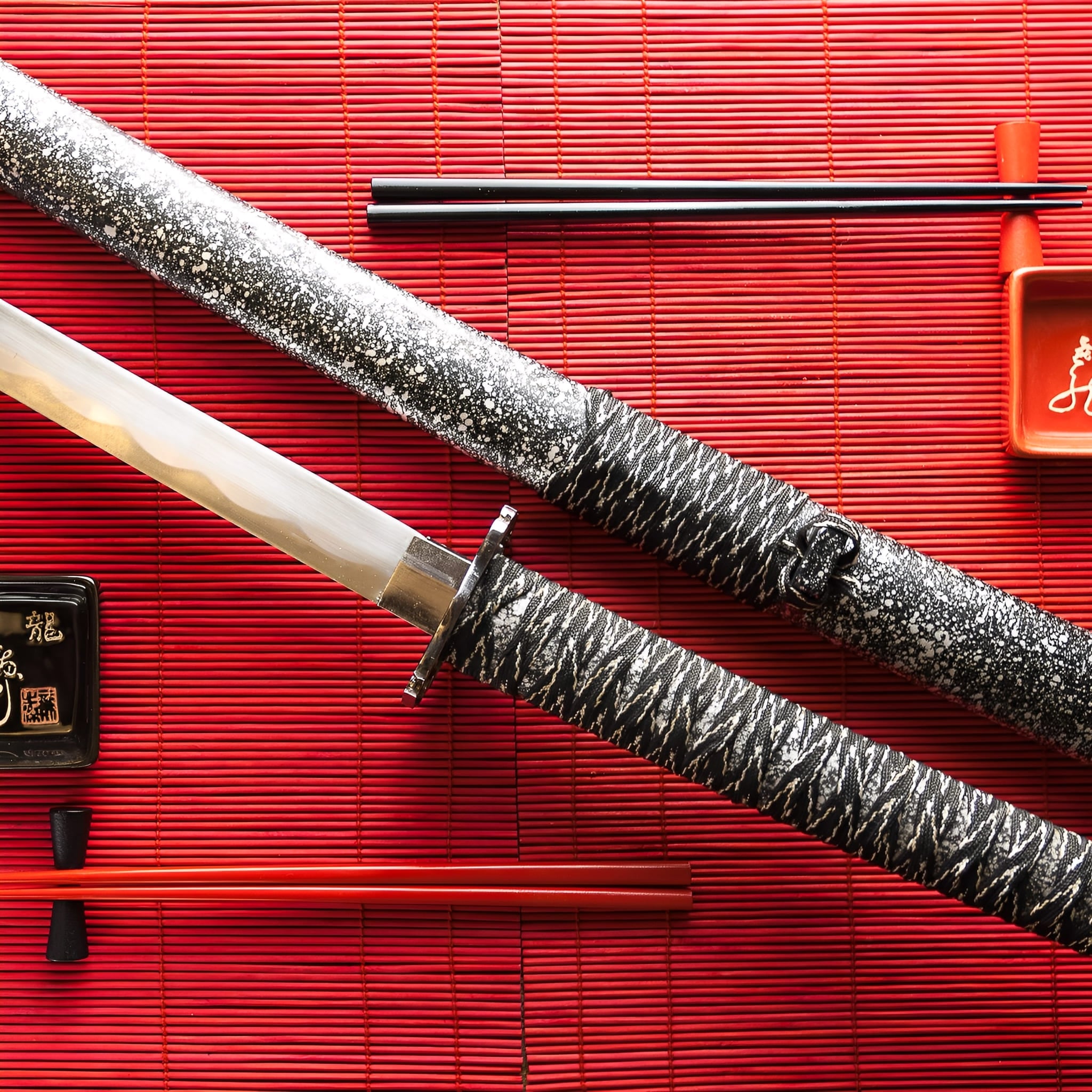
More Than a Sword, A Lifelong Legacy
Owning a handmade katana is an experience that goes beyond the blade itself. It’s holding history, tradition, and craftsmanship in your hands.
Whether displayed as a work of art or wielded with precision, your katana will stand as a symbol of timeless skill and dedication for generations to come.
-
Key Destinations
United States: 5–7 days
Canada: 5–7 days
Australia: 6–9 days
Denmark: 4–6 days
Netherlands: 3–5 days
Sweden: 4–6 days
Switzerland: 3–5 days
Finland: 5–7 days
Singapore: 6–8 days -
Central European Partners
France: 2–3 days
Germany: 3–5 days
Spain: 4–6 days
Italy: 4–6 days
Belgium: 3–5 days
Austria: 4–6 days
Ireland: 4–6 days
Poland: 4–6 days
Portugal: 4–6 days -
Extended EU Network
Czechia: 4–6 days
Hungary: 4–6 days
Slovakia: 4–6 days
Slovenia: 5–7 days
Romania: 5–7 days
Bulgaria: 5–7 days
Croatia: 5–7 days
Serbia: 5–7 days
Estonia: 5–7 days
Latvia: 5–7 days
Lithuania: 5–7 days
Luxembourg: 3–5 days
Greece: 5–8 days -
FAQ’s
Visit our FAQs page to find answers to common questions.